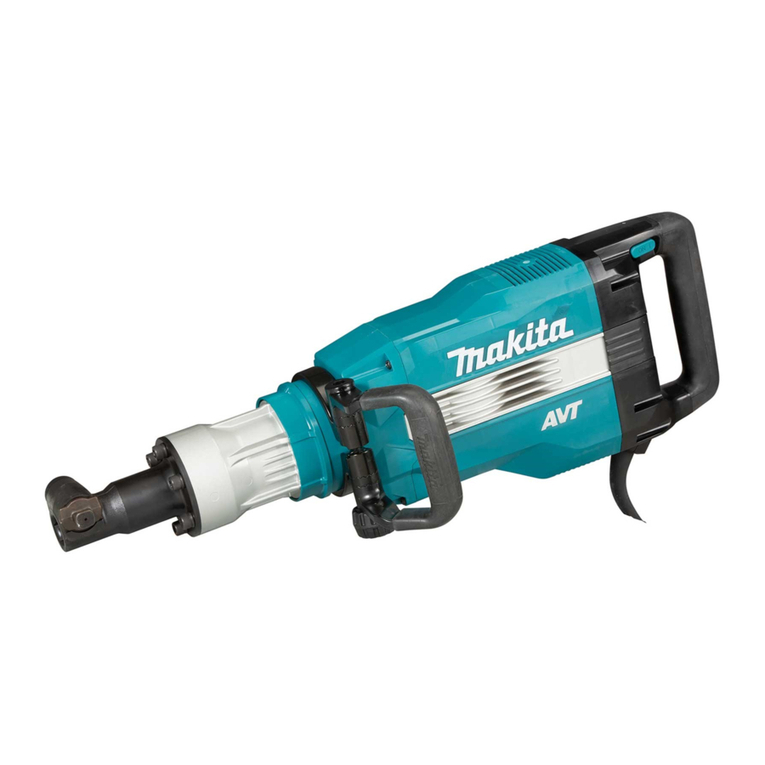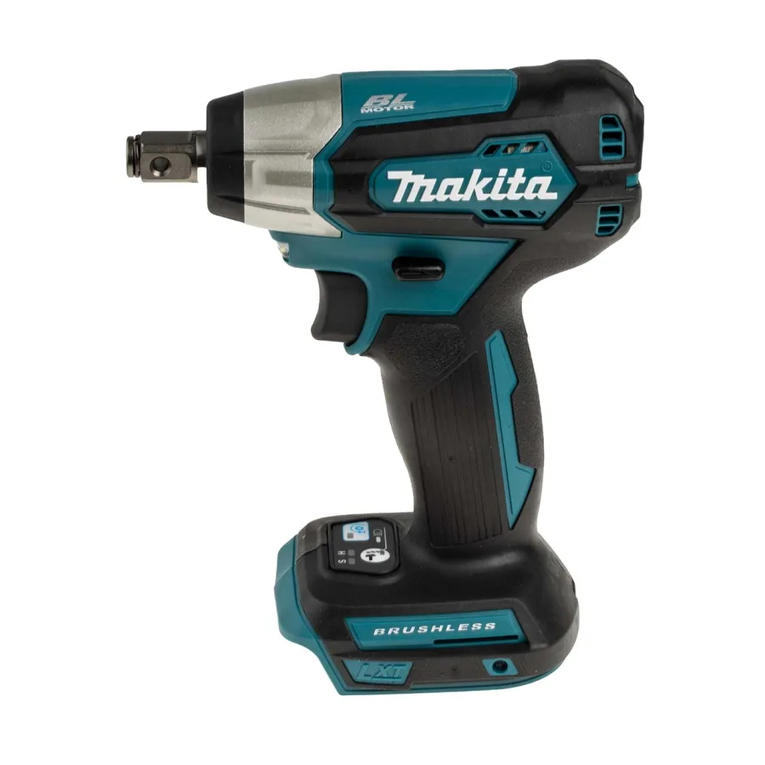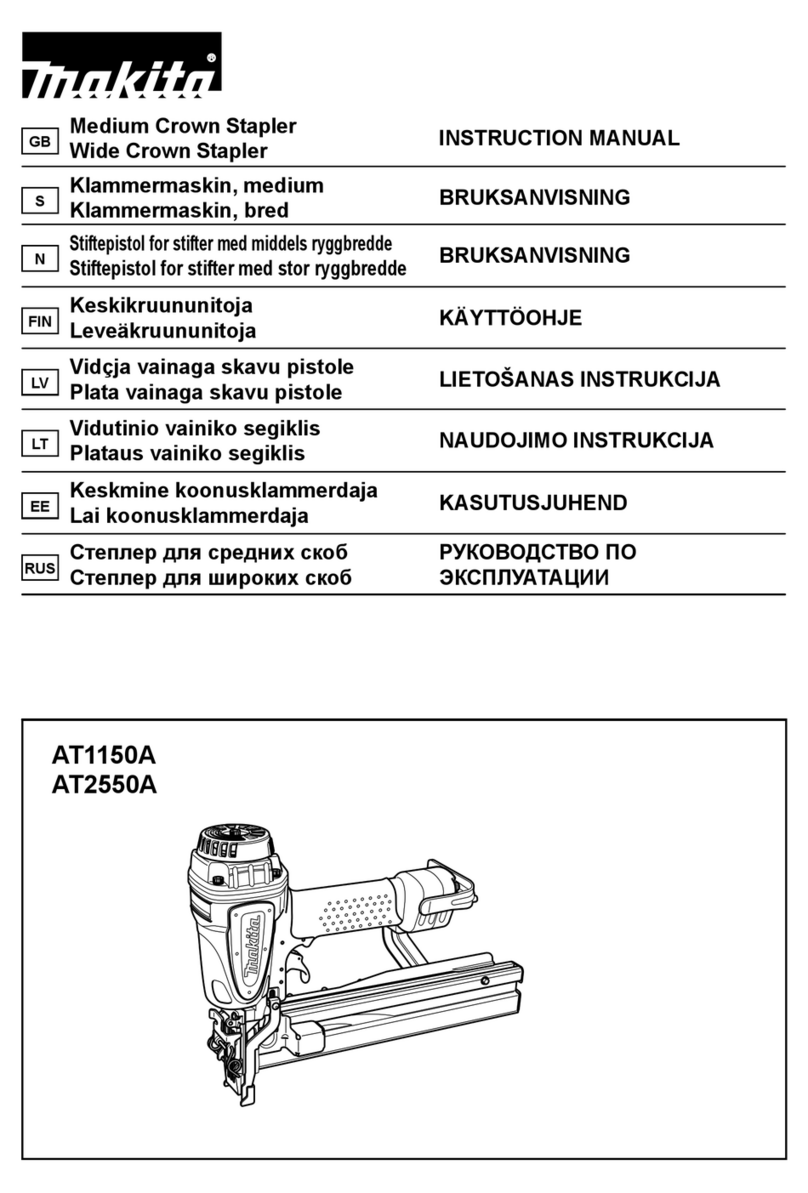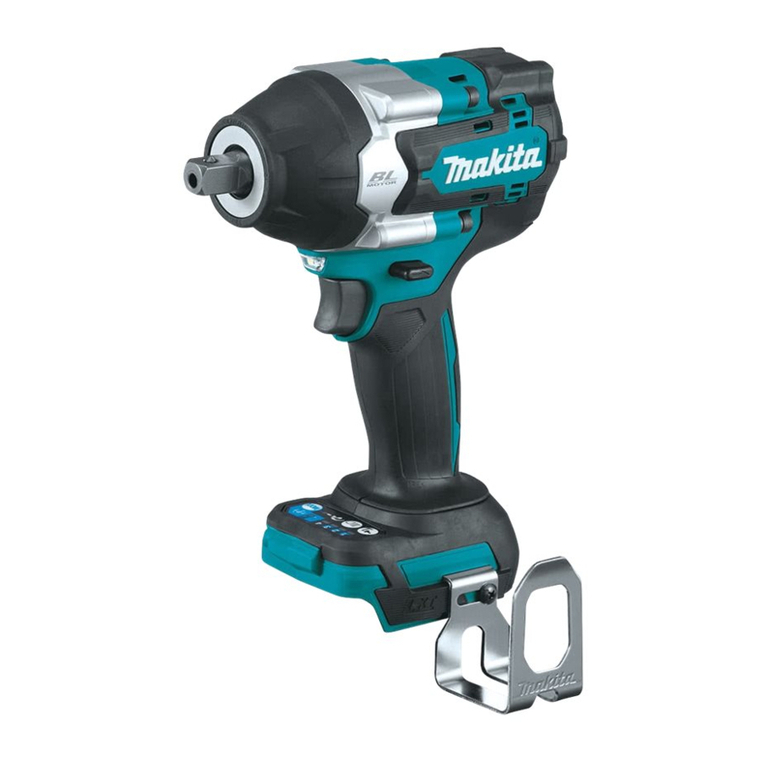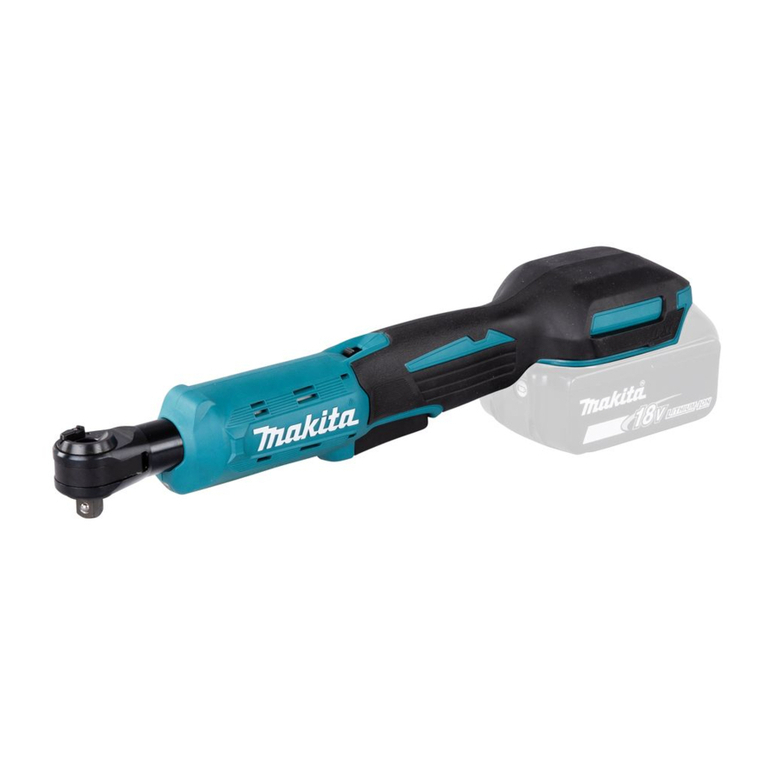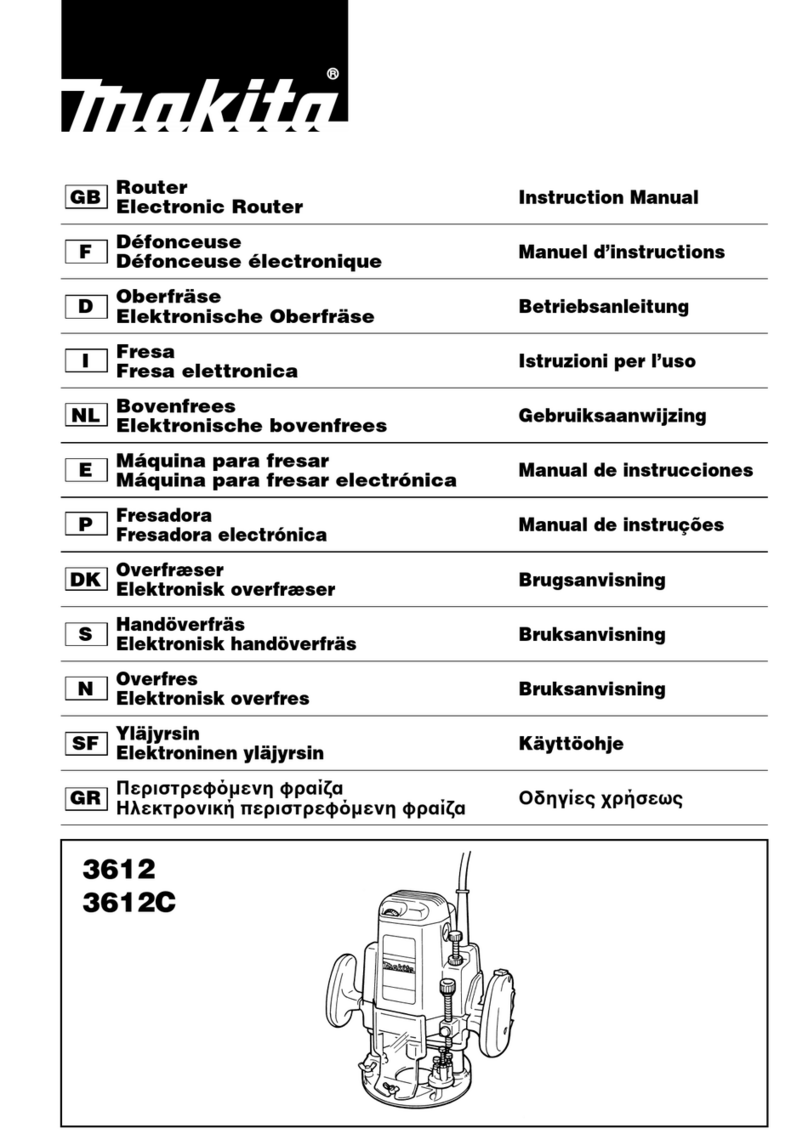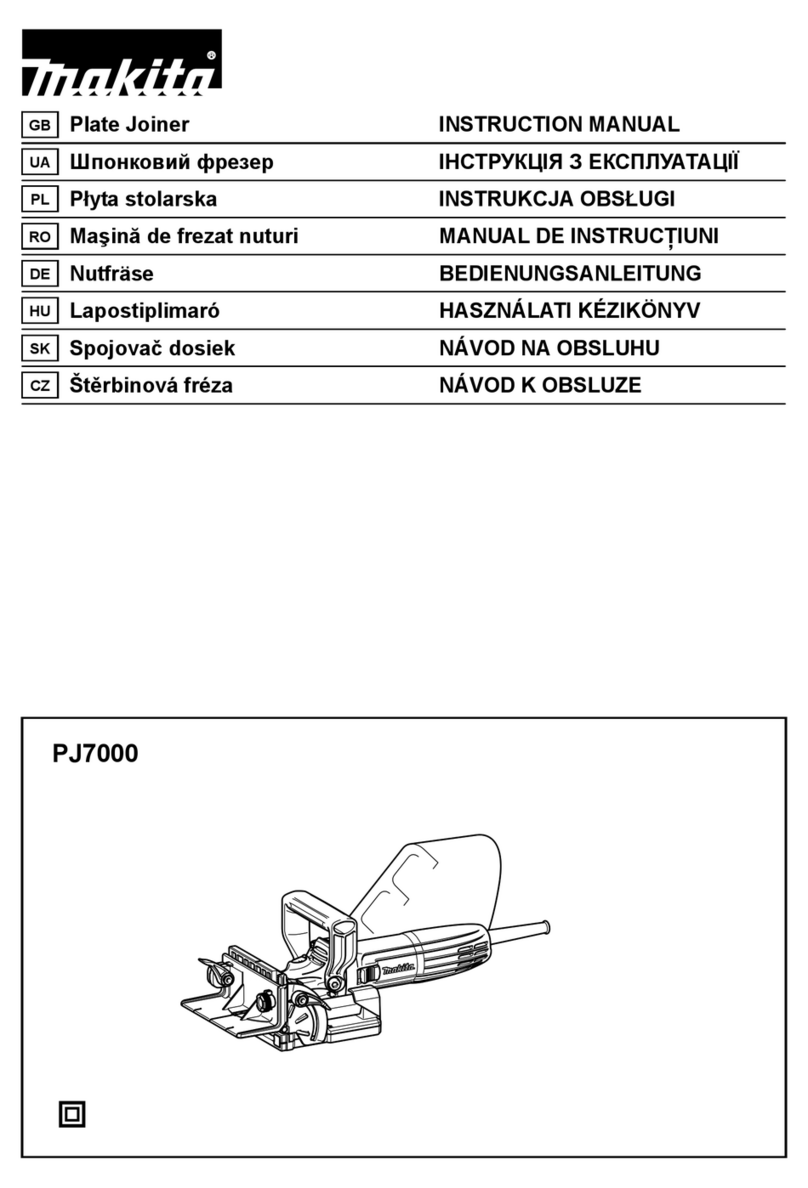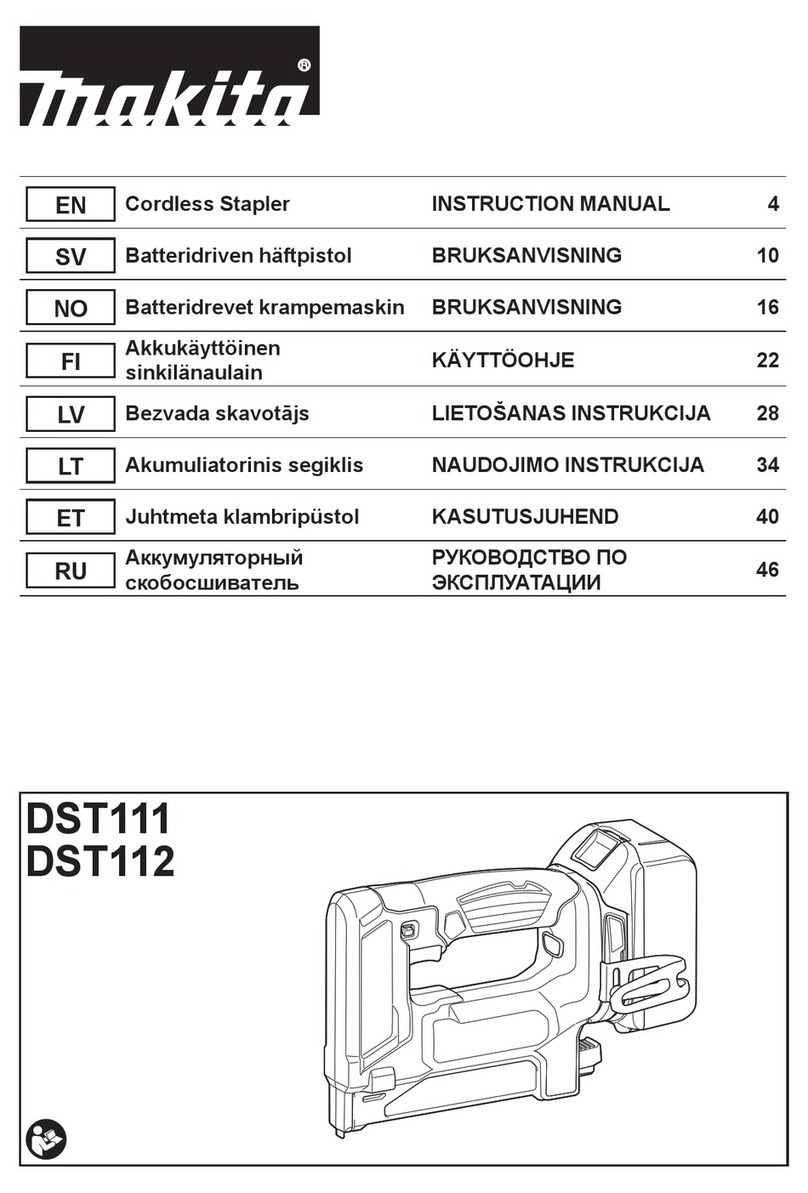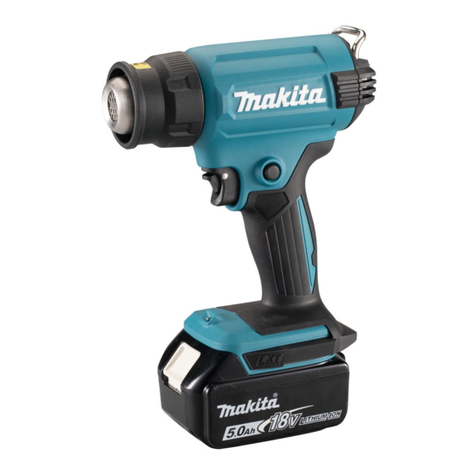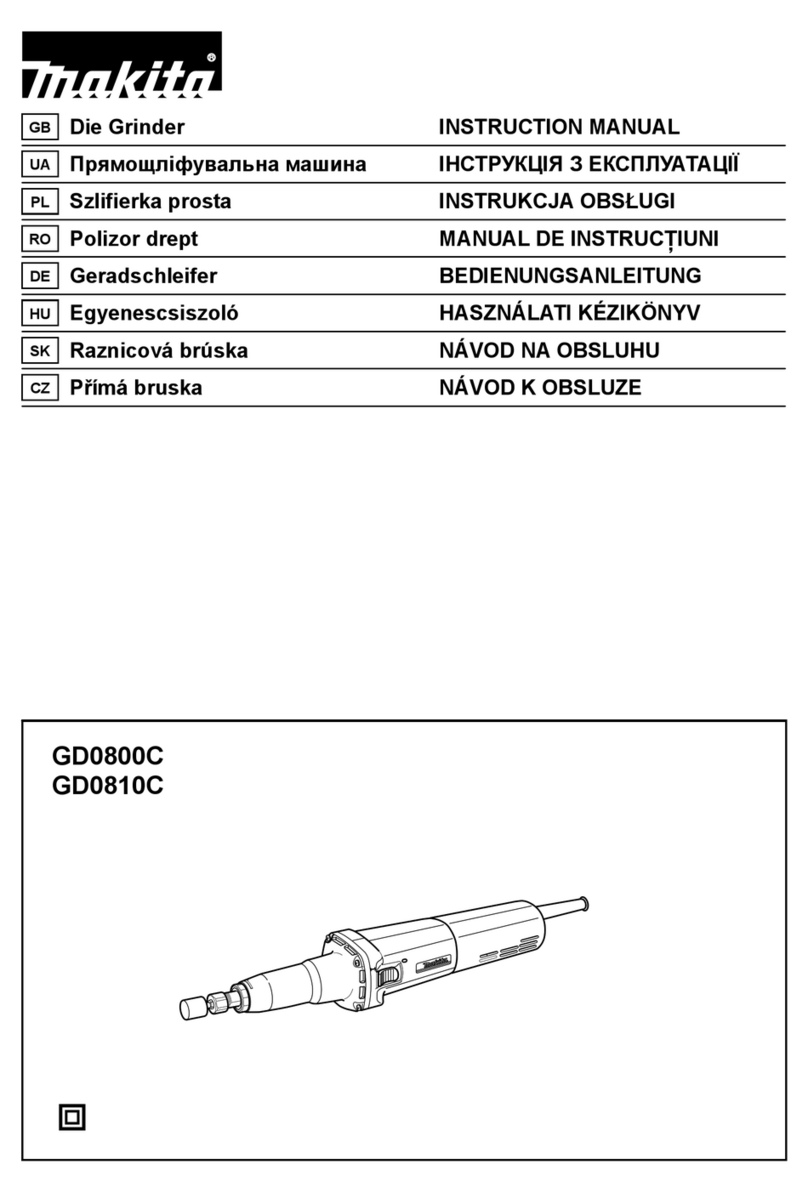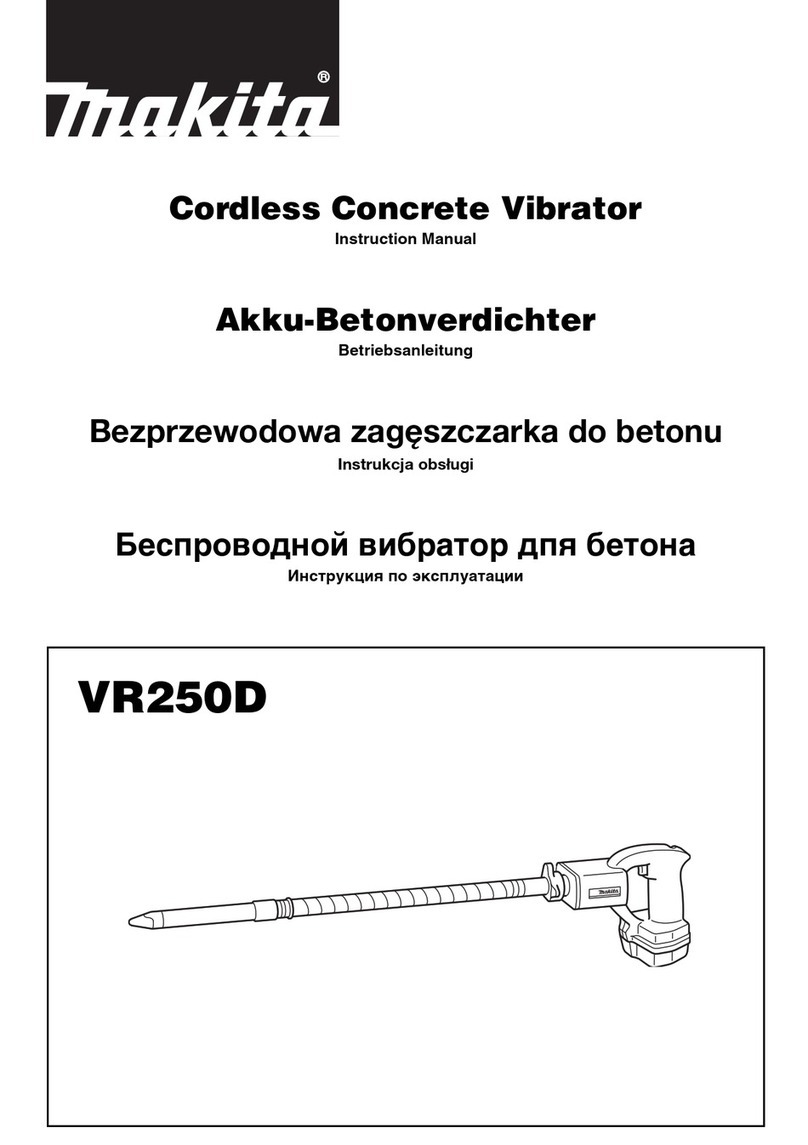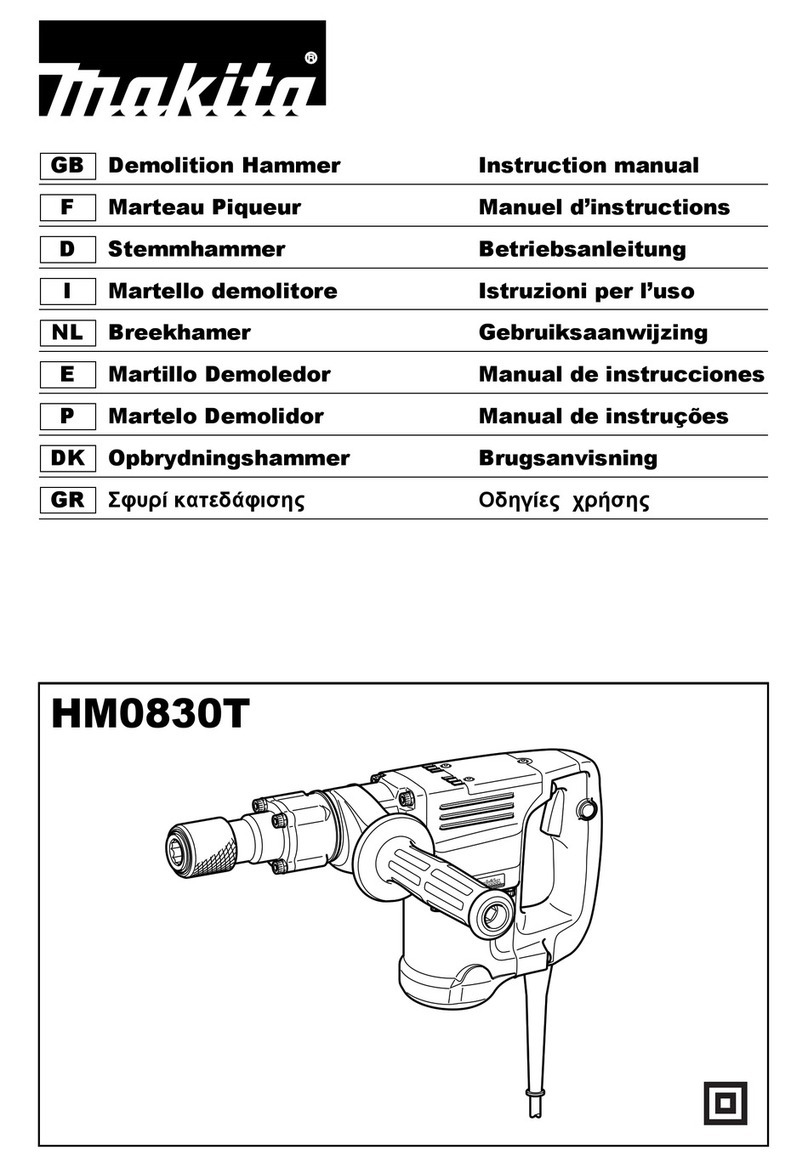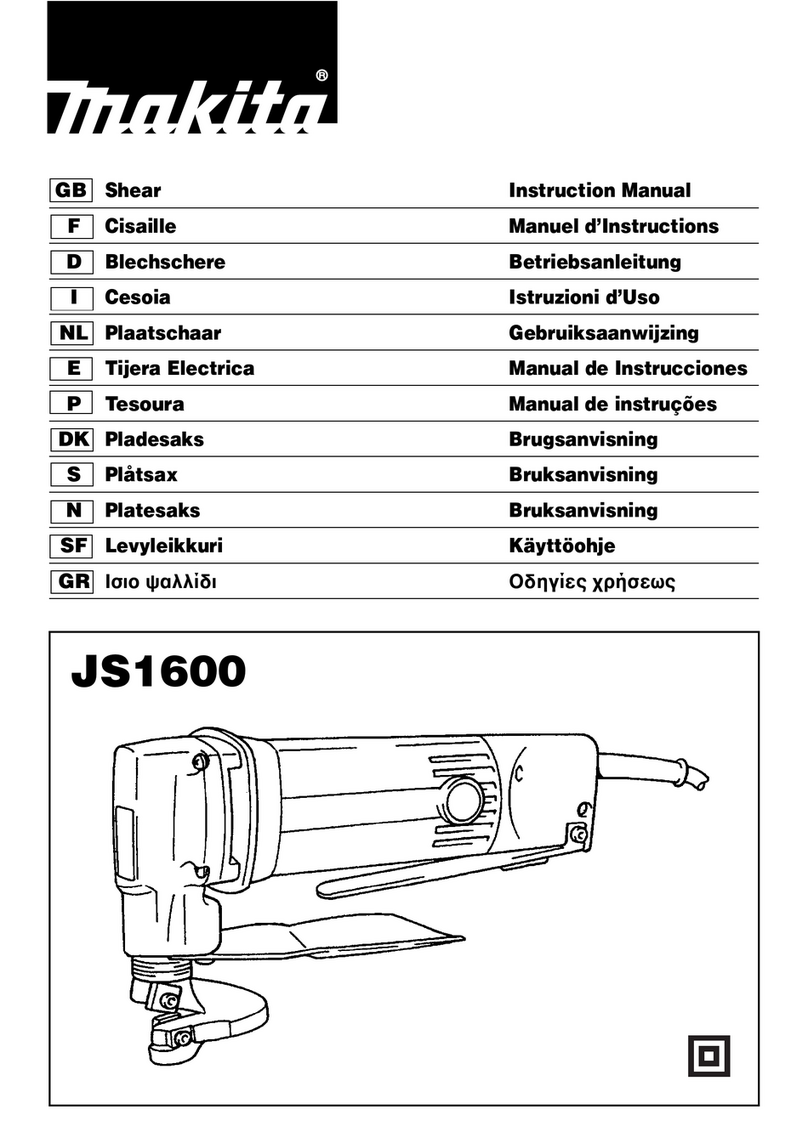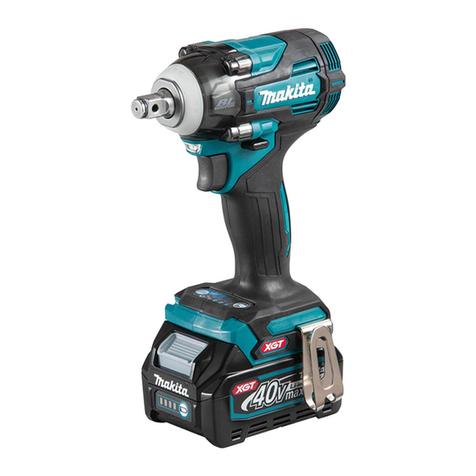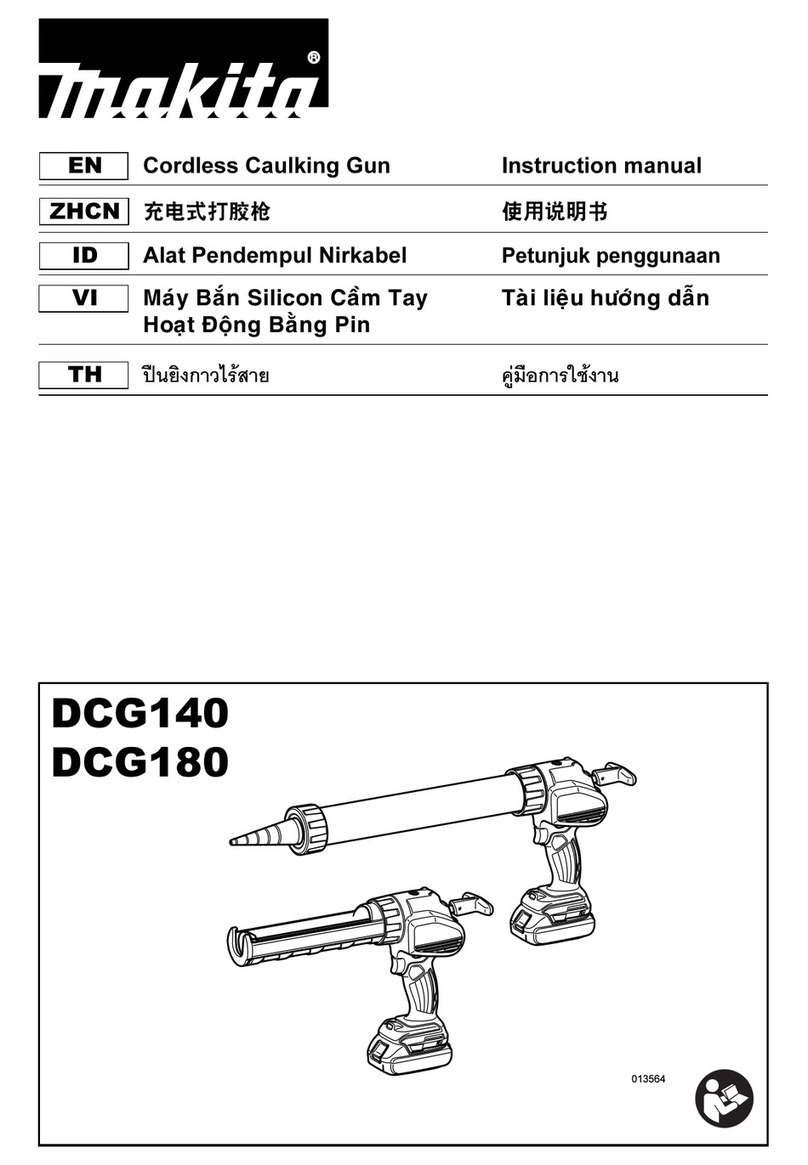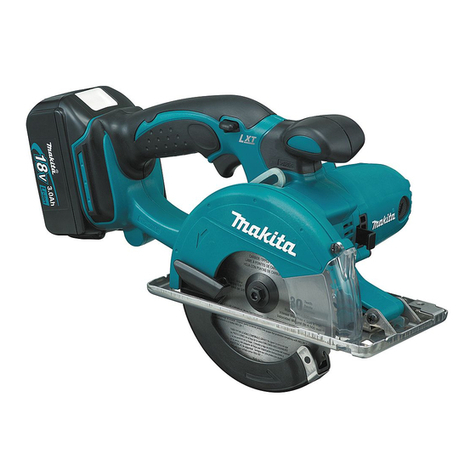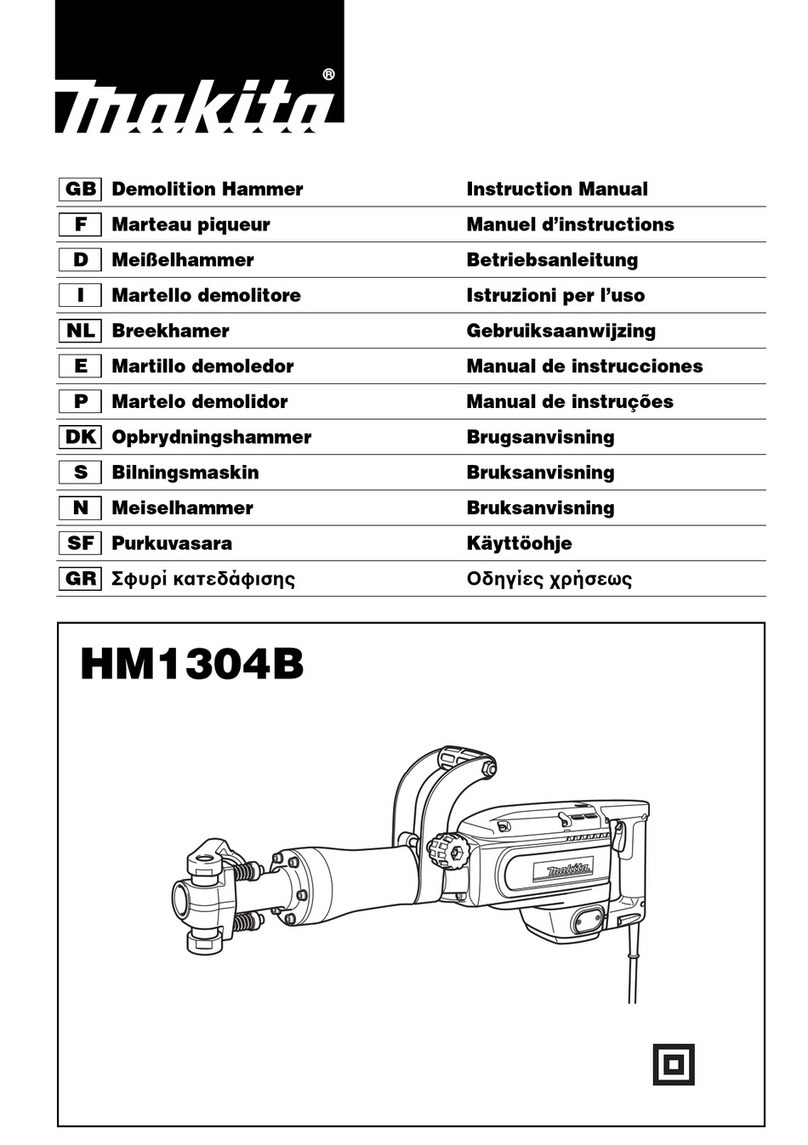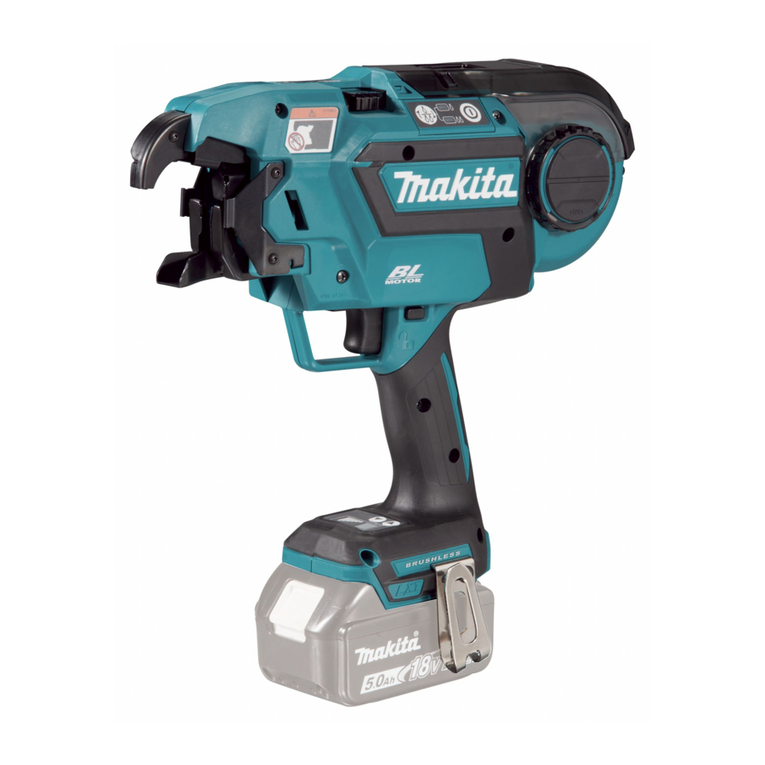
7
NOTE:
The overheat protection works only with a battery
cartridge with a star mark.
Fig.2
Changing the die position
Fig.3
The die holder position can be changed 360°. To
change it, proceed as follows.
1. Loosen the lock nut with the wrench provided.
2. Pull the die holder slightly and turn it to the
desired position for operation.
3. Tighten the lock nut to secure the die holder in
the desired position.
There are four positive stops at 90° each: 0°, 90° left
and right and 180°. To position the die to any of these
positive stops:
4. Loosen the lock nut with the wrench provided.
5. Pull the die holder slightly and depress lightly
while turning it to the desired position. The die
holder will lock into one of the positive stop
positions as desired.
6. Turn the die holder slightly to make sure that it is
positively locked into position.
7. Tighten the lock nut to secure the die holder.
Permissible cutting thickness
Fig.4
The thickness of material to be cut depends upon the
tensile strength of the material itself. The groove on the
die holder acts as a thickness gauge for allowable
cutting thickness. Do not attempt to cut any material
which will not fit into this groove.
Cutting line
The notch in the die holder indicates your cutting line.
Its width is equal to the cutting width. Align the notch to
the cutting line on the workpiece when cutting.
Switch action
Fig.5
CAUTION:
• Before inserting the battery cartridge into the tool,
always check to see that the slide switch actuates
properly and returns to the "OFF" position when
the rear of the slide switch is depressed.
• Switch can be locked in "ON" position for ease of
operator comfort during extended use. Apply
caution when locking tool in "ON" position and
maintain firm grasp on tool.
To start the tool, slide the slide switch toward the "I
(ON)" position. For continuous operation, press the front
of the slide switch to lock it.
To stop the tool, press the rear of the slide switch, then
slide it toward the "O (OFF)" position.
Indication lamp with multi function
Fig.6
Indication lamps are located in two positions.
−Battery cartridge replacing signal
−When the battery power is almost used up
during operation, the red lamp lights up and
the tool stops immediately. Replace the
battery with fully charged one when the red
lamp lights up.
−Accidental re-start preventive function
−Even if the battery cartridge is inserted on
the tool with the slide switch in the "I (ON)"
position, the tool does not start. At this time,
the lamp flickers slowly and this shows that
the accidental re-start preventive function is
at work.
−To start the tool, first slide the slide switch
toward the "O (OFF)" position and then slide
it toward the "I (ON)" position.
ASSEMBLY
CAUTION:
• Always be sure that the tool is switched off and the
battery cartridge is removed before carrying out
any work on the tool.
Removing or installing the punch and die
Fig.7
Always replace the punch and die as a set. To remove
the punch and die, loosen the lock nut with the wrench.
Remove the die holder from the tool. Use the hex
wrench to loosen the bolts which secure the die.
Remove the die from the die holder.
Use the hex wrench to loosen the screw which secures
the punch. Pull the punch out of the punch holder.
Fig.8
To install the punch and die, insert the punch into the
punch holder so that the notch in the punch faces
toward the screw. Tighten the screw to secure the
punch. Install the die on the die holder. Tighten the bolts
to secure the die.
Fig.9
Then install the die holder on the tool so that the punch
is inserted through the hole in the die holder. Tighten the
lock nut to secure the die holder. After replacing the
punch and die, lubricate them with machine oil and run
the tool for a while.
Fig.10
